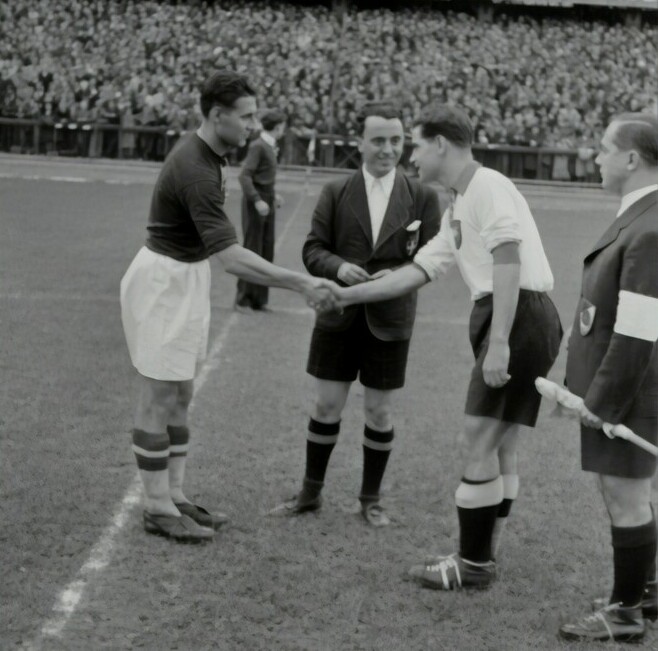 I’m going to take you back, way back, to the origins of soccer. You’re going to find out about how different cultures played their version of the game long before we had stadiums and floodlights.
I’m going to take you back, way back, to the origins of soccer. You’re going to find out about how different cultures played their version of the game long before we had stadiums and floodlights.
Consider China’s Cuju, dating around the 3rd century BC. I’m talking about a competitive game involving a ball and a net – doesn’t that sound like an early form of soccer to you? It sure does to me.
But this isn’t just about Cuju, it’s also about other versions. Medieval Europe’s mob football, for instance, was less about rules and more about community chaos which often took over entire towns on special occasions.
Yet, amidst the chaos, there was a drive for order. That’s where the codification of rules comes in. I’ll highlight how these ancient games laid the groundwork for the structure of modern soccer that we know today.
Now what? We’ll transition from the scattered ancient practices to the pivotal 19th century, where the scattered rules started to come together. That’s going to include the significant moments such as the formation of a standard rule set and the birth of the Football Association in England – effectively setting the scene for the beautiful game to flourish.
The Foundation of Formal Soccer The 19th Century Game
If you want to understand how soccer became the structured sport we know today, it’s crucial to head back to the 19th century. During this time, a myriad of local customs and games began to merge into a more uniform set of rules.
Back in 1863, a pivotal moment occurred: the formation of the Football Association in England. This was the birth of soccer as an organized sport. Several clubs agreed to play by a common set of rules, which became known as the ‘Laws of the Game.’
The spread of soccer wasn’t just about Brits enjoying a good game. As the British Empire expanded, so did the popularity of the sport. It was the era of colonialism and migration, and sailors, soldiers, and traders took the game with them across the seas.
History buffs might recall the famed first international soccer match between Scotland and England in 1872. It was a goalless draw, but the significance lay in its symbolic start of international competition, laying the groundwork for the global stage soccer would soon command.
This period also saw school matches and intercollegiate competitions, further solidifying soccer’s position in the fabric of society and schooling. Who knew that what started off with folks kicking around an inflated pig’s bladder could evolve into a sport that excites nations?
Globalization of Soccer From Streets to World Stage
You might wonder how soccer transitioned from a game played in back alleys and schoolyards to the highlight of grandiose stadiums. It’s a tale of cultural exchange, passion, and triumph. As the 19th century came to a close, the seeds of soccer were sown far and wide, setting the stage for the sport’s international growth.
At the heart of soccer’s expansion was the founding of the Federation Internationale de Football Association, better known as FIFA, in 1904. This step was crucial in standardizing rules across countries and organizing international competitions. The inaugural FIFA World Cup, held in Uruguay in 1930, was a pivotal moment, showcasing the game’s global appeal.
But there’s more to it than just formal organizations. The periods surrounding the World Wars were transformative for the sport. Soccer served as a morale booster and symbol of hope during trying times. Post-war, the game’s popularity soared even higher as nations sought common ground and recovery through sport.
What really cemented soccer’s status were the legends it produced. Players like Pele, Maradona, and Beckenbauer became household names, transcending borders and inspiring new generations of fans. Alongside the birth of superstars, the last century witnessed increased commercialization. Deals with television networks and sponsorships brought soccer into the limelight like never before.
As our gaze shifts from the historical to the contemporary, you’re about to see how the game continues to evolve. We’ll delve into technological innovations that have transformed the sport, address the controversies that test its integrity, and consider what the future holds for the beautiful game.
Modern Soccer: Innovations, Controversies, and Future
The beautiful game, as soccer is lovingly called, isn’t static – it’s evolving before our eyes. Technology plays a major role today, with innovations like Video Assistant Referee (VAR) refining the accuracy of the calls made on the pitch. Goal-line technology is another leap forward, erasing doubts and debates over scoring.
Amidst technological strides, soccer hasn’t been free from controversies. Issues like corruption within FIFA, racial abuse, and the debate over fair pay demonstrate that the sport reflects societal challenges. It’s a reminder that there’s more to the game than what happens on the field.
The role of media and sponsorship deals has morphed soccer into a global commercial powerhouse. Clubs have become international brands, with players doubling as global icons. The influx of money has changed the dynamics, influencing everything from player transfers to ticket prices.
As fans, we’ve also changed. Social media allows for a constant connection with our favorite teams and players. Fantasy leagues and esports versions of soccer draw in new demographics, changing how we interact with the sport. The future of soccer is not just on the field, but also in how we engage with it digitally.
In conclusion, soccer’s journey from its ancient origins to its present status has been one of constant evolution. As the world changes, so does soccer, adapting to new technologies, confronting social issues, and growing its fan base. Its future seems poised to reflect the progression we see in technology and social dynamics, holding true to its title as the world’s favorite sport.
